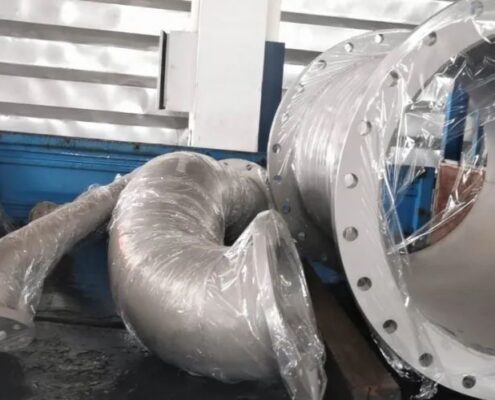The difference between 316L stainless steel and 2205 duplex stainless steel
316L stainless steel is widely used in the chemical industry because of its excellent corrosion resistance. 316L stainless steel is also a derivative of 18-8 type austenitic stainless steel, with 2~3% molybdenum added.Nitrogen is added to 2205 duplex stainless steel to improve local corrosion resistance. Its solid solution structure accounts for about half of ferrite and austenite. Generally, the minimum phase content needs to reach 30%, so it has ferrite. Performance characteristics of bulk and austenitic stainless steels.
From the above point of view, 316L stainless steel and 2205 duplex stainless steel are two different stainless steel materials. The question is, which stainless steel has more advantages? What about the downside? The following ZTE Yide Xiaobian will tell you about it.
The differences between 316L stainless steel and 2205 duplex stainless steel are as follows:
1. The yield strength of 2205 duplex stainless steel is more than double that of 316L stainless steel, and it has enough plastic toughness for forming. The wall thickness of the pressure vessel made of 2205 duplex stainless steel is 30-50% lower than that of 316L stainless steel, which is conducive to reducing costs.
2. 2205 duplex stainless steel has excellent resistance to stress corrosion cracking, especially in the marine environment containing chloride ions, stress corrosion is a prominent problem that is difficult to solve for austenitic stainless steel including 316L stainless steel.

3. In many media, the corrosion resistance of 2205 duplex stainless steel is better than that of ordinary 316L stainless steel, because duplex stainless steel has extremely high corrosion resistance, such as acetic acid, formic acid, etc. It can even replace austenitic stainless steel and even corrosion resistance alloy. However, it is still necessary to choose 2205 duplex stainless steel or 316L stainless steel according to environmental requirements and cost.
4. It has high strength and good local corrosion resistance, and its wear resistance and corrosion fatigue properties are better than 316L stainless steel.
5. The linear expansion coefficient of it is lower than that of 316L stainless steel, and it is close to carbon steel. It is suitable for carbon steel connections and has important engineering significance.
6. Whether under dynamic or static load conditions, 2205 duplex stainless steel has a higher energy absorption capacity than 316L stainless steel, which has obvious advantages and practical application value for structural parts or pipelines to cope with sudden shocks, explosions, etc.
Having said so much about their differences, it seems to have more advantages than 316L stainless steel, but does it have any disadvantages? Wuxi ZTE Yide Xiaobian tells you, yes. Compared with 316L stainless steel, the disadvantages of 2205 duplex stainless steel are as follows:
1. The universality and versatility of 2205 duplex stainless steel are not as good as that of 316L stainless steel. For example, for long-term applications, the temperature of the medium used must be controlled below 250 degrees, and only 316L stainless steel can be competent.
2. The plasticity and toughness of 2205 duplex stainless steel are lower than that of 316L stainless steel, and the cold and hot processing technology and forming performance are also poor.
3. It has medium temperature brittleness, and it is necessary to strictly control the processing system of heat treatment and welding to avoid harmful phases and damage performance.
4. The main reason for the weakness of duplex stainless steel compared with austenitic stainless steel is that 2205 duplex stainless steel contains a large amount of ferrite.


